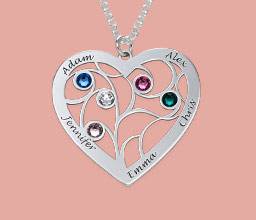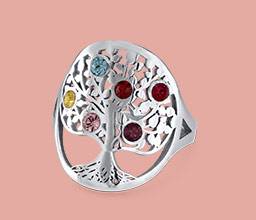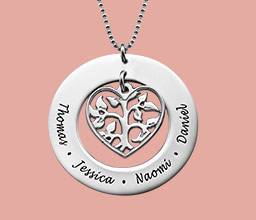
Tree of Life Meaning
The Celtic Tree of Life
For ancient Celts, the tree of life served as an important symbol. Known as Crann Bethadh, this beautiful design represented the balance, harmony, and interconnectedness of all things in the natural world. The symbol dates back to approximately 2,000 BCE, with Bronze Age carvings that predate the Celtic culture itself by approximately 1,000 years. Most scholars agree that the Celts adopted and adapted the Norse version of the tree of life symbol for their own use. Still popular today, this symbol depicts a tree within a circle, often with roots and branches seeming to come together in a lovely, interwoven fashion. Contemporary versions often replace the knotwork with family names, adding even more meaning to an ancient icon.
Incredibly, the tree of life was more than a decorative element to Celts who lived thousands of years ago. When new settlements were formed, a single tree would be left at the centre of each clearing. This tree served as an important gathering place while providing shade and beauty. Because of the birds and animals who could be seen in and around the tree, it was seen as a caretaker – literally a living, breathing tree of life. Furthermore, early Celts believed that these trees had special powers. Because of this, a live tree of life was a required feature in every community. It was a crime to damage these trees, and during times of war, tribes triumphed over their enemies by cutting down the opposing community’s tree of life.
The Tree of Life Symbol
In Celtic culture and many others, the main meaning behind the tree of life symbol is the interconnectedness of all life. Deep within the earth, trees roots interconnect with one another and with the roots of other plants; up in the forest’s canopy, branches intersect in a way that provides shade and shelter to birds, animals, and other plants that populate the forest floor. A single tree might serve as a home to burrowing creatures, industrious chipmunks and squirrels, and colourful songbirds while offering fruit or nuts and providing shade to travelers who pass by.
Because it ascends from the tree’s roots while supporting the branches, the tree’s trunk was often seen as a connector between heaven, earth, and the underworld. Ancient Celts believed that their deities used the tree to facilitate communication between humans and spirits, as well as with other life forms.
Beyond its spiritual meaning, the tree of life symbolised longevity, wisdom, and strength. It also served as a symbol of rebirth, due to its ability to shed old leaves at the end of autumn before spending the winter in leafless slumber and then sprouting new leaves with the arrival of spring. As a symbol of family, the tree of life connects past, present, and future generations in a beautiful, visible way.
It’s no wonder that today, the tree of life is among the most popular symbols worldwide. All versions are associated with positive energy, continuity, harmony, and balance. Whether celebrated with a pendant or a tree of life bracelet, it’s one of the most meaningful and iconic jewellery designs one can wear.











